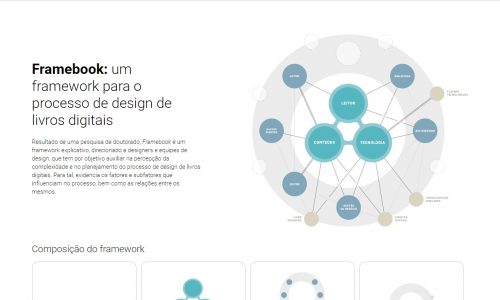
Framebook: um framework para o processo de design de livros digitais
The advent of the digital book brought changes and challenges that have affected the conception, production, distribution, and even the purpose
and the associated culture of the book. Faced with these transformations, it is necessary to reinforce attention to the design process of the digital
book from a new perspective, adopting a systemic thinking to obtain a clear vision of the specificities of these artifacts and the complexity of its
project. In this direction, this research aimed to propose a framework for the digital book design process, from a systemic perspective. As theoretical
bases, systemic thinking is used to obtain an expanded view of the particularities of the digital book and the changes that occur in the
editorial context. This research, with a qualitative approach, was classified as descriptive and propositive. In the first phase of the study a literature
review was carried out, composed by the bibliographical and systematic reviews. Subsequently, interviews were conducted with professionals who
work in the development of digital books, whose results together with the findings of the literature gave rise, in the following phase, to a set of
premises that underpinned the construction of the first version of the framework. In the fourth phase the validity check of the initial framework
was carried out in the context of a focus group with designers, whose contributions indicated adjustments and refinements for the final version.
The framework proposed in this thesis, named Framebook, has explanatory character, diagrammatic form and represents the system that
influences the design process of the digital book, composed of 13 factors. Given the precepts of systemic thinking, where the properties of the parts
can only be understood from the organization of the whole, the factors are interrelated and organized into three groups: primary (Content,
Technology and Reader), secondary (Author, Other Agents, Editor, Business Management and Distributor) and tertiary (Printed Book, Digital
Rights, Similar Digital Books and Technological Players), in addition to 27 subfactors distributed among them. The research also resulted in a
complementary table to the framework, which brings questions that seek to guide the weighting of factors and subfactors, helping in the
interrelationship between them and in the design decisions. Based on these results, it is considered that the research contributes to the
perception of the complexity of digital book design process and to its planning from a systemic perspective.
Keywords: Digital book. Design process. Systemic thinking. Framework

 Português do Brasil
Português do Brasil
